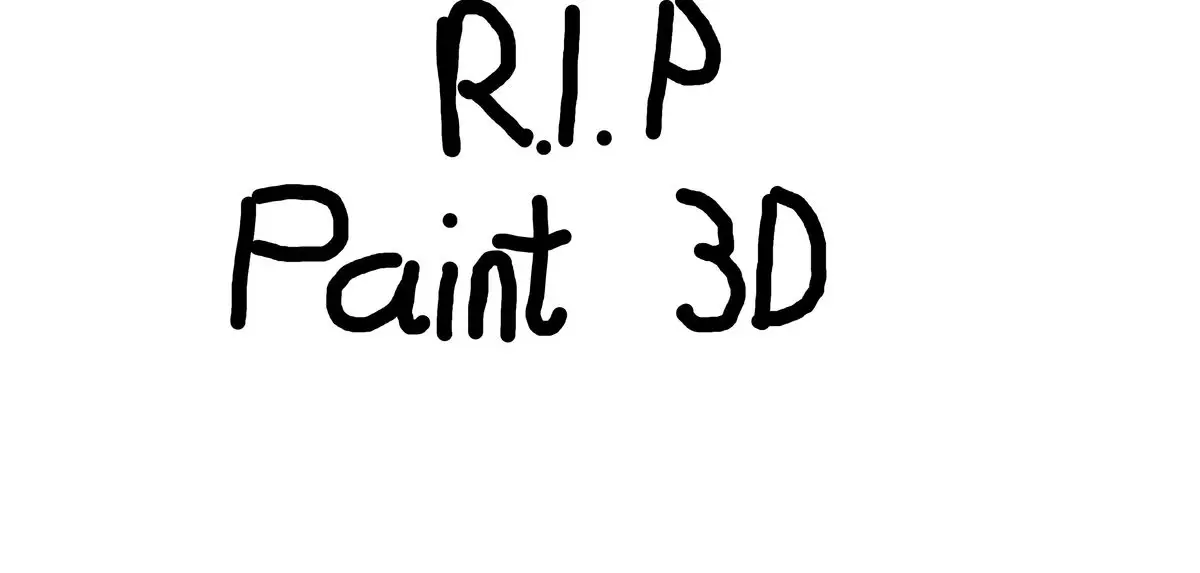For many who grew up in the era of Windows PCs, Microsoft Paint holds a special place in their hearts. This simple yet engaging tool served as an introduction to digital art for countless children during the dawn of personal computing. With its straightforward interface and basic tools, Paint allowed young users to experiment, create, and express themselves, acting as a canvas where creativity could flourish despite a lack of robust gaming options. However, as technology advanced and consumers sought more sophisticated design programs, the limitations of Paint became increasingly apparent.
While Paint’s legacy is rich with nostalgia, its competitive edge has been significantly challenged in recent years. Many users have blossomed into serious hobbyists and professionals longing for more advanced features. This shift in user demographics has ushered in a new era of digital art applications, thereby setting the stage for the development of Paint 3D.
Paint 3D was launched with high expectations, aiming to inject life into the classic Paint experience while incorporating three-dimensional modeling capabilities. In theory, this was an exciting progression; however, the practical execution fell short of users’ needs. As of recent reports, Microsoft has decided to discontinue Paint 3D, with the software no longer available for download from the Microsoft Store. For those who had the foresight to download it before November 4, the program remains operational, albeit without future updates. This decision has led many to question the viability of Paint 3D as a serious tool.
One major criticism of Paint 3D, as compared to established competitors, was its lack of advanced features. Programs like Blender and more robust graphic design applications provided extensive capabilities and a far superior user experience. As users began to dive deeper into 3D creation, they quickly recognized that Paint 3D’s tools did not measure up, hampering its adoption for serious tasks. Furthermore, users reported slower boot-up times, which negated the program’s efficiency for quick editing tasks, pushing them back towards the simpler yet faster Paint application.
Despite the downfall of Paint 3D, Paint itself has enjoyed a renaissance over the past few years. Microsoft has focused on enhancing Paint, introducing features like AI-based background removal and advanced brushes. These updates have upgraded Paint from a basic drawing tool to a more capable competitor against image manipulation giants such as GIMP and Photoshop. The incorporation of generative AI tools, although contentious among traditionalists, provides a unique offering that responds to user demand for smart editing solutions.
More than just a nostalgia trip, Paint has become a relevant application in today’s digital landscape. It resonates particularly with users of Windows tablets, positioning itself alongside popular apps like Procreate for iPads. This ease of use combined with effective tools makes Paint an attractive option for casual artists who may not need the steep learning curve associated with professional software.
The end of Paint 3D marks a poignant moment in the realm of digital art tools. While the childhood memories of playing around with Paint still linger, the discontinuation of its 3D counterpart represents a necessary pivot for Microsoft. By refocusing efforts on traditional Paint, the company seems to be responding to the evolving preferences of modern users, merging nostalgia with contemporary demands.
It is always disheartening when a beloved software is phased out, especially one that symbolizes a whole generation’s exploration of digital creativity. Nevertheless, the enduring legacy of Paint, bolstered by continuous updates and innovations, illustrates Microsoft’s commitment to meet the diverse needs of its user base. In the end, while we bid adieu to Paint 3D, we welcome the brighter future for Paint, where simplicity and functionality can coalesce to provide users with the tools they need for creative expression.

